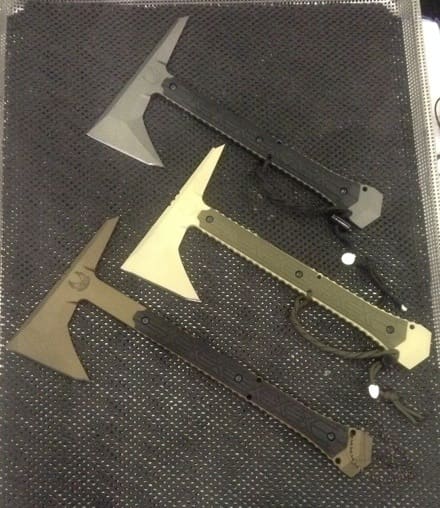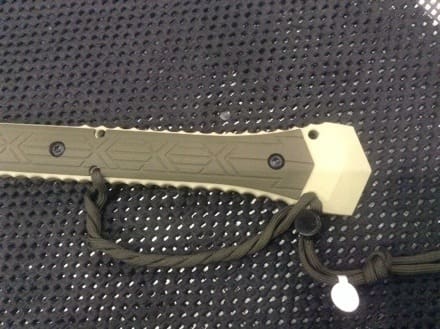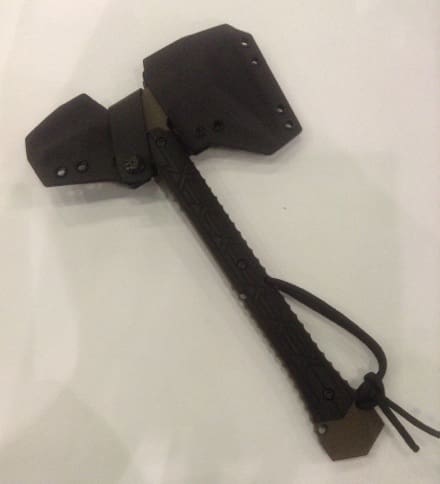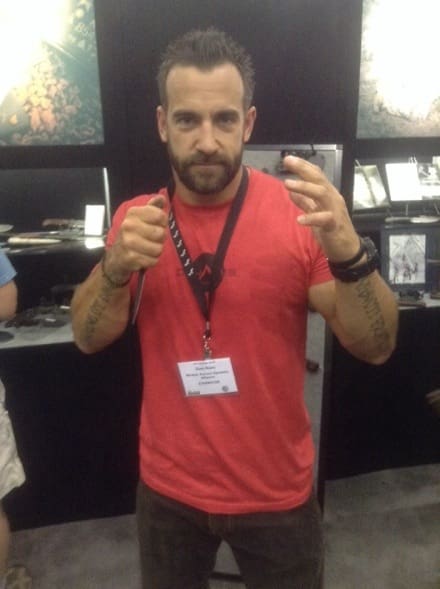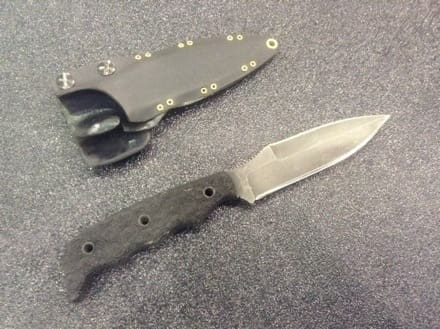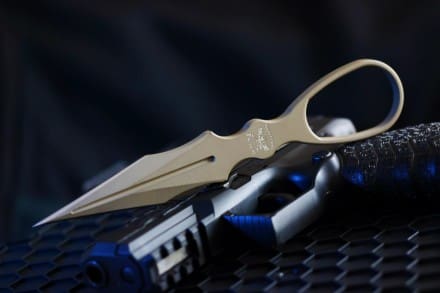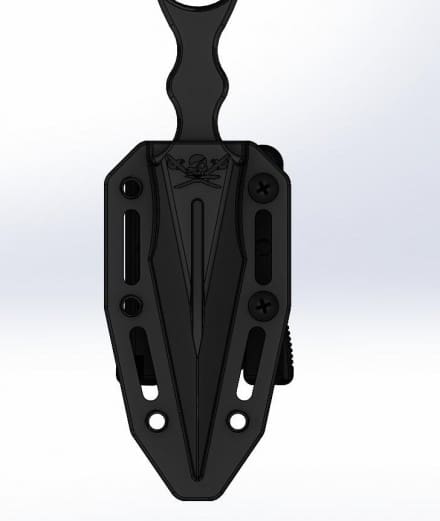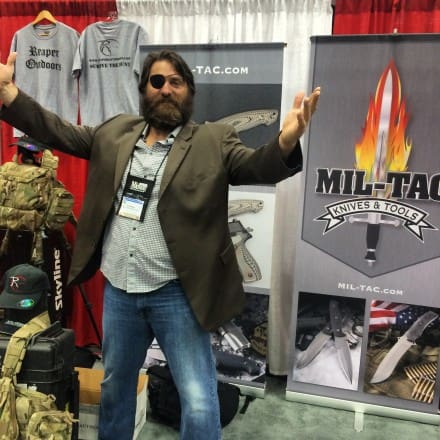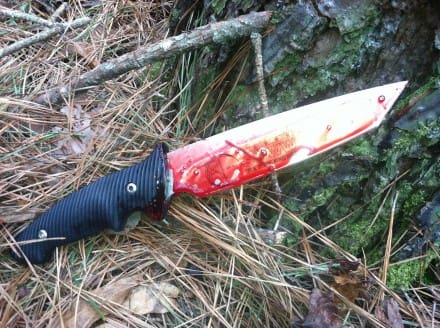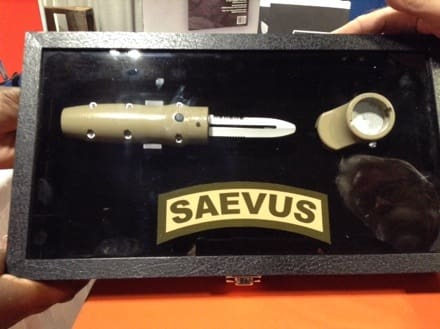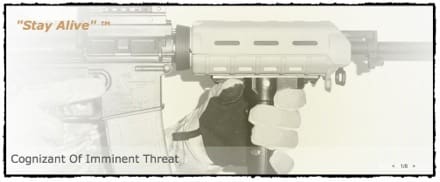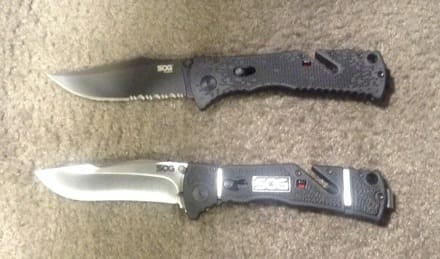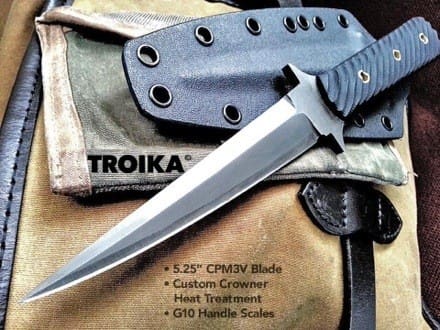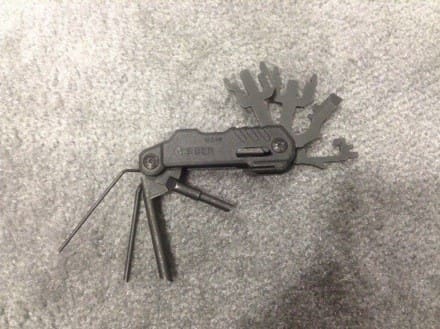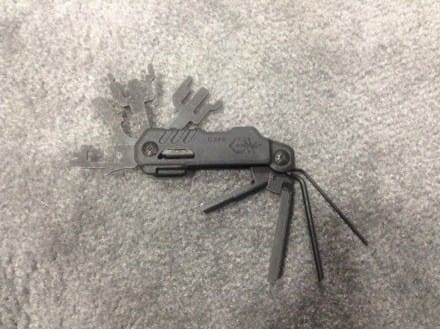What do you get when you combine the reliability of an RMJ Tactical tomahawk, Andrew Bawidamann’s amazing pinup style and VZ Grips excellent micarta work?
A practical work of art called the Ragnorak.
The new Ragnorak Tomahawk is available in 12″ and 14″ models. Crafted by RMJ Tactical from 4140 Steel it incorporates micarta scales by VZ Grips. In fact, these make a perfect match with VZ’s pistol grips in the Ragnorak pattern.
The handle incorporates lanyard holes as well as a shovel head at the butt/bubble for use as a prybar. Additionally, there are finger grooves at front and rear of the handle for front and reverse grips. Finally, it comes with a Kydex sheath that incorporates the PUP-style quick detach straps seen on Bawidamann’s new magazine carriers.


